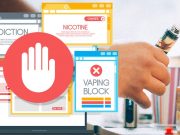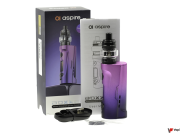Poisoning cases have significantly decreased from close to 4000 cases in 2014, to 1038 cases reported up to July 31st 2016 according the American Association of Poison Control Centers (AAPCC). A report says that some children who have ingested nicotine have become ill, mostly reporting nausea and vomiting and a few requiring hospitalization. However the AAPCC has pointed out that “The term “exposure” means someone has had contact with the substance in some way; for example, ingested, inhaled, absorbed by the skin or eyes, etc. Not all exposures are poisonings or overdoses.”
Too focused on demonizing e-cigarettes to notice the real hazards?
While regulations’ experts have been busy villainizing e-cigarettes, studies such as that by Kristin Noll-Marsh who is vice president of the Consumer Advocates for Smoke-free Alternatives Association (CASAA), found that children’s exposure to other highly toxic chemicals, such as unregulated household products, were the ones who led to actual serious poisoning cases.
After the inadvertent implementation of the Child Proof Packaging regulation at the end of last July, many amongst which SFATA, have spoken up stating that whilst they are all for child safety, they were taking action by seeking legal advice about the implications of putting in place such a rule without warning.
One must not forget to take in consideration that other smoking cessation aids such as Nicotine lozenges, are exempt from such regulations, in fact a few years back a case of multiple poisonings from nicotine lozenges was reported, as a child mistook the latter for candy and took them at school to share with his classmates. No serious complications had been reported, besides the usual nausea and vomiting, however this incident had highlighted the fact that although sale of vaping products is restricted to 18+ or 21+ individuals, and serious child proofing regulations have been enforced on these, other NRT’s such as the aforementioned lozenges are fully accessible to children.
Preventative measures to take
The AAPCC concluded its report by pointing out that the above mentioned cases include exposure by adults, therefore the latter should handle vaping products with care, protect their skin when doing so, keep them out of children’s sights and reach, follow instructions on labels, and dispose of them as instructed.
Should anyone require to report an exposure to liquid nicotine, they are encouraged to do so on 1-800-222-1222.
Continue to read about e-liquid poisoning:














